Rava Dosa (South Indian Delicacy)
Ingredients
- 1/2 cup fine sooji samolina
- 1/4 cup rice flour
- 1/4 cup all-purpose-flour plain flour, maida
- 1/2 tsp cumin seeds jeera
- 1/2 tsp salt
- 1/8 tsp asafetida hing
- 1 tbsp cilantro chopped hara dhania
- 1 green finely chopped
- 2 cupa watwer approximately
Instructions
- Mix all three flours including semolina, rice flour and all-purpose flour. Make a thin batter using little water at a time and avoiding any lumps. Batter should have pouring consistency like buttermilk.
- Add all other ingredients to the batter including cumin seeds, salt, asafetida, cilantro and green chili. Mix it well. Let the batter stand for about 30 minutes.
- Heat the skillet on medium high. To check if skillet is ready sprinkle few drops of water over skillet water should sizzle. Wipe the skillet with few drops of oil.
- Pour the batter with ladle on the skillet in a circular motion starting from the periphery to the center. Keep pouring the batter till it covers the whole skillet.
- Note: pour the batter on the skillet from about 3 to 4 inches height. Don’t try to spread the batter otherwise the characteristic and appearance of Rava Dosa will not come. Rava Dosa should have holes like swiss cheese or have lacy look.
- Sprinkle 1 teaspoon of oil around dosa.
- Cook Dosa over medium heat for about 2 minutes or until Dosa becomes golden brown. Then turn the Dosa using spatula.
- Let Dosa cook for about 1 minute from other side. Dosa will be golden brown on one side and light color on other side. Thin and crispy Rava Dosa is ready to serve.
Notes
How to make Rava Dosa: Your Guide to the Perfect Crispy Delight
Dosa is a popular south indian delicacy which looks like a crepe. It’s like a crisp and thin pancake made of rice and urad dal batter. Traditionally Dosa is served with sambar, aloo masala and coconut chutney. It is an Indian crepe made usually through rice batter, but here we have experimented and made many alternative dosa such as Oat Dosa, Besan Dosa, Rava Dosa, Sorghum Dosa. What is Rava Dosa: This preparation is using rava and is a bread based breakfast recipe that is vegan. The preparation entails skillfully combining pan techniques and manual dexterity to achieve the perfect bread cooked on non-stick skillets.
Mixing the Flours: Crafting the Perfect Rava Dosa Batter
Embark on your culinary journey to master the art of rava dosa by starting with the essential step of mixing the flours. In your quest to perfect the rava dosa recipe, combine three key flours – semolina, rice flour, and all-purpose flour. This trio forms the foundation of the batter, each contributing its unique texture and flavor. As you blend the flours, ensure a smooth consistency by gradually adding water to the mix, meticulously stirring to prevent the formation of lumps. Aim for a batter resembling buttermilk, with a fluidity that promises to spread effortlessly on the skillet. This foundational step lays the groundwork for the success of your dosa rava recipe, setting the stage for a culinary masterpiece.
Flavorful Fusion: Adding the Finishing Touches to Your Dosa Rava Recipe
Elevate the rava dosa batter to new heights by infusing it with a harmonious medley of essential ingredients. Cumin seeds, salt, asafetida, cilantro, and green chilli converge to create a symphony of flavors that dance on the palate. With a thorough mix, allow the batter to rest for approximately 30 minutes—a crucial period that allows the ingredients to meld and intermingle, enhancing the overall taste and texture of your rava dosa. This resting period is a vital secret in the art of how to make rava dosa, imparting depth and complexity to the final dish. Embrace this moment of anticipation as the flavors marry and evolve, preparing to embark on a culinary adventure like no other.
Sizzling Skillet: Setting the Stage for Rava Dosa Magic
Prepare your skillet on medium-high heat, the stage upon which the magic of rava dosa unfolds. A simple water test unveils the skillet’s readiness – when sprinkled on the surface, the water should sizzle and evaporate in an instant, signalling the perfect temperature for dosa-making. A touch of oil ensures a non-stick surface, laying the groundwork for the mesmerising dance of the rava dosa batter. With the skillet prepped and primed, you are poised to embark on a culinary journey filled with tantalizing aromas and mouthwatering flavors.
Artful Pouring: Creating the Signature Look of Rava Dosa
With finesse and precision, pour the rava dosa batter onto the heated skillet, employing a circular motion from the edges towards the centre. The key lies in maintaining a height of 3 to 4 inches while pouring, resisting the urge to spread the batter thinly. This technique ensures the characteristic appearance of rava dosa – a delicate, lacy texture with enticing holes reminiscent of Swiss cheese. As the batter spreads and sizzles on the skillet, marvel at the artistry unfolding before your eyes, a testament to the skill and craftsmanship inherent in the rava dosa tradition.
Crispy Transformation: Cooking Your Rava Dosa to Perfection
As the rava dosa graces the heated skillet, sprinkle a teaspoon of oil around its edges, allowing it to cook over medium heat for approximately 2 minutes until it achieves a golden brown hue. With practised precision, skillfully flip the dosa using a spatula, revealing its crispy underside to the world. Let it cook for an additional minute, ensuring that both sides are cooked to perfection. The end result is a thin and crispy rava dosa, a culinary masterpiece ready to tantalize your taste buds and transport you to culinary nirvana. With each bite, savor the symphony of flavors and textures that define the essence of this beloved Indian delicacy.
In conclusion, the journey of crafting the perfect rava dosa is a culinary adventure filled with precision, skill, and a touch of artistry. From mixing the flours to savoring the crispy transformation on the skillet, each step in the process is imbued with tradition and flavor, culminating in a dish that delights the senses and nourishes the soul. So, gather your ingredients, fire up your skillet, and embark on a journey to discover the magic of rava dosa – a timeless classic that never fails to captivate and delight.
Serving Suggestions: Enhancing the Rava Dosa Experience
Rava dosa’s aromatic profile pairs exceptionally well with Hari Cilantro Chutney. For a traditional touch, serve it alongside Sambar, a lentil soup enriched with vegetables, and coconut chutney. Explore these culinary companions to elevate your Rava Dosa feast to new heights.

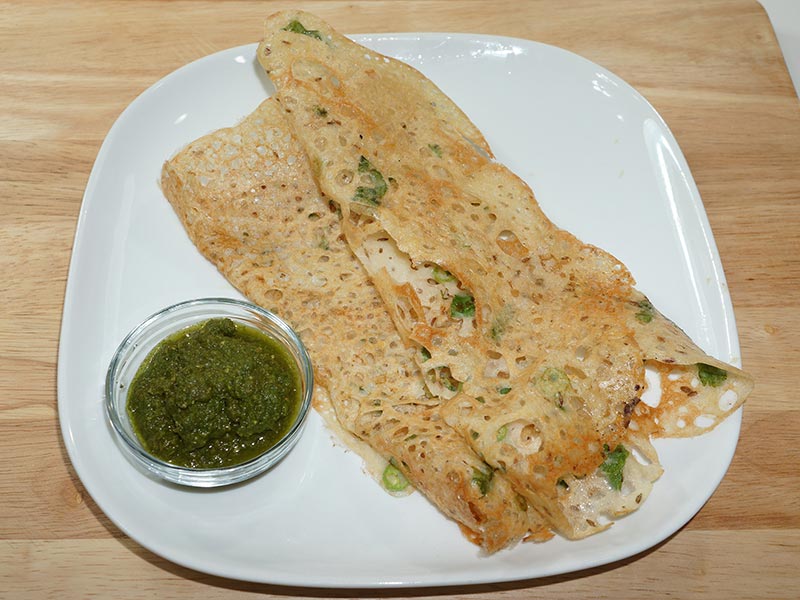
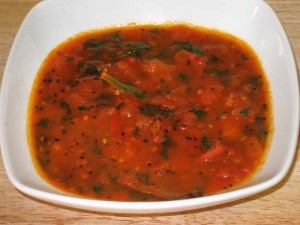
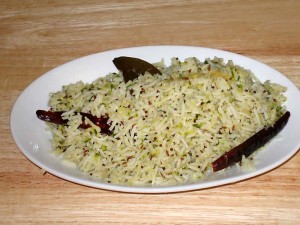
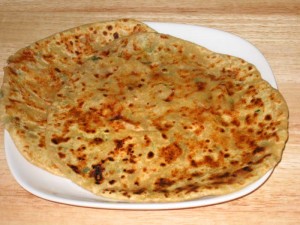
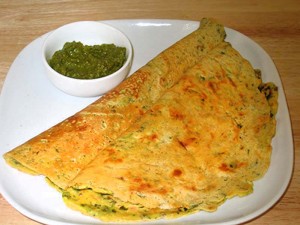
I tried rava dosa with oats flour instead of maida. it came out very well.
Instead of water, we in Andhra style use buttermilk . If you don’t have buttermilk then add 2 teaspoon of sour curds. Add little more water.
Madhav, Thanks for suggestions.
Ma’am I actually make ravva dosa by mixing 1 part suji and 1 part all purpose flour to 10 parts rice flour and that is also good but now I will try as you said
Thank you
very tasty
Gr8…Ma’am..didn’t know this is the way o pour the dough…from periphery to center ! Shall try soon….
Hi Manjula
Looking forward to trying out your recipe. One question though, what do I do with the leftover batter? Can I store it in the fridge? If so, for how long?
Thanks in advance!
Zara, just for a day
When started mixing the ingredients make it a thick paste like we prepare for chapati or parantha, keep it aside for sometime (10min), from it, take the quantity you need mix water to get butter milk like consistency it should flow freely from your fingers and rest of the mix could be stored for next day
Note: The thick paste should not be added with jeera or hing if you want to use it for next day instead add them when you mix with water and when you ready to make dosa
Hello!
Without using rice flour is it possible to make rava dosa .
Sneha, rice is one of the main ingredient in rava dosa
Can we substitute the maida with atta?If we can should we use more water.It looks good and you have given exact water to add. Thank you Manjula.
Than…. q Mam…!
Ur recipes are too good and it really helpful me when I lonely in home.
Thanks!
Thank u soo much for this recipe manjula aunty. My mum in law loves dosa too much.I tried ur rava dosa recipe today nd it turned out to be awesome.. Everyone loved it especially my mil. I feel so happy.. Thx a lot 🙂
Hi Manjula ji,
Do we need to steam or roast the rava before making the batter?
Sujica, No just follow the recipe.
I make rava dosa regularly. Usually I don’t like to use white flour(All Purpose Flour or Maida). The last time I made using Besan (chickpea flour) instead of All Purpose Flour. The dosas turned out even more delicious.
Quick Question Can I use a Blender or a whisk to Stir it?
j. miller, whisk will work, no blender
The dosa did not come out good. When I try to flip it breaks and forms lumps even though the batter is thin and I stirred it before pouring in the pan. How can I make it right ?
Amr, may be you flip dosa to quick
Manju my mom keep telling that normally people who make rava dosa will add curd to it?? But in your recipe there is no room for curd. Shall i add it are let the recipe be the same way??. I actually loved yours….. 🙂
Hey just want to share that in rava dosa curd is added but prob with adding it is the proportion. If we mess it up the dosage will stick to the tawa.
This is the ultimate recipe as it is easy and tastes almost same.
Once u become a pro in this u can make ur changes.
Hope this is ok
Manjula jee,
My wife used to make Rawa Dos for me for many years. I like Rawa Dosa very much.
Unfortunately she died on 5th January 2013. I stay alone, My sons and daughters-in-law separate but in the same high-rise building built by me.
Today I gave then a BIG surprise. I opened your site saw the video for Raw Dosa and made with the help of my helper boy. And it was delicious. Thanks a lot Manjula jee.
Thank you so much for this super easy recipe. My hubby and I both love rava dosas. The ones I made last evening turned out great. Next time I’m thinking of adding chopped onions too! Thanks again.
Xx,
Priyanka
I tried making Rava Dosa today for the first time. It turned out perfect. Thank you Manjula.
Can i use fruit salt in it?
Hope Manjula won’t mind my making a suggestion here as one who grew up eating rava dosa of many varieties, both blended with whole rice and prepared with rice flour. Despite the fact that rice flour is what is generally used for rava dosa, one can use maida only without using any rice flour. The taste won’t be exactly like the traditional rava dosa, but, pretty close and good. The secrets of making perfect dosas: 1. Keep dosa skillet just for dosas without making any chapati on it. 2. Try not to wash the iron skillet too much, certain dosas like rava dosa need the oil on the base of the skillet without adding any, prior to pouring the batter. 3. If you must add oil, use a tip of a potato stuck on a fork to dip in the oil container and spread on the skillet. Hope these tips help. 🙂
Thanx a lot for the tips 🙂
Can we make it without the rice flour…do you have any other substitute …or if I can put cooked/steamed rice churned in a mixer….
Please do let me know
Annie,
In this recipe no substitute
Hi Mam,
I tried this yesterday but it did not come well.
I was breaking when I was turning.
Also, dont why all the rava was accumating down in the batter.
Why it was happening?
Priyanka Soni,
If the rava accumulates on the bottom, keep on mixing with your hand and try sprinkling the batter with your hand on the griddle(as it is thin, it will be easy to sprinkle)…it works fine….
I tried it yesterday and it came out fine…..similar to the one in restaurants….thanks a lot for the info….
gayathri
Hello Auntyji,
Tried making rava dosa the other day came out soo well..everyone enjoyed it..
thank you
Thank you Manjula for your recipes and videos. I have made many times your dishes and they have all been very good.
Thank you,manjula..i v prepared rava dosa.it was my first experiance.my wife also likes your recipes and now she is also a fan of your.once again thankyou…jayakrishnan&thushara,punjab
Manjulaji, Your recipes are awesome. You explain them so well, and seem to be a very genuine person.
Munjulaji,
Your receipes are great. I love the way you demonstrated the rava dosa. I am just starting to learn cooking and your receipes are so user friendly. Thank you so much. Long life to you.
Best Rgds
Meena
Tried this recipe and it really turned out well. If I had followed exactly, it would have turned out awesome! Thanks for sharing.
Hi! Manjula Aunty,
Yesterday my friend came at my home and I made Rava Dosa for her. It turned out great.. 🙂 We both loved it!
Thanks for sharing this and all the recipes.
Your teaching method is so nice..I love to watch your videos.
Please add the recipe of ‘Sukhdi’.
Thank you Manjula for your recipes and videos. I have made several of your dishes and they have all been very good.
A word of caution: what most American cooks call semolina isn’t sooji. Semolina is yellow, is made from hard durum wheat, and is the primary ingredient of Italian pasta. The American word for sooji is farina. Farina is white, is made from soft wheat, and is the primary ingredient of Cream of Wheat.
SteveBrook
Thank you this is the first time
We can prepare Dosa after waiting for ten minutes. I do it regularly at home.
Sowmiya
That should work.
Awesome. I always wondered, how they prepare rava dosa in restaurant.
Thank you for sharing this recipe
Thanks
Deepti